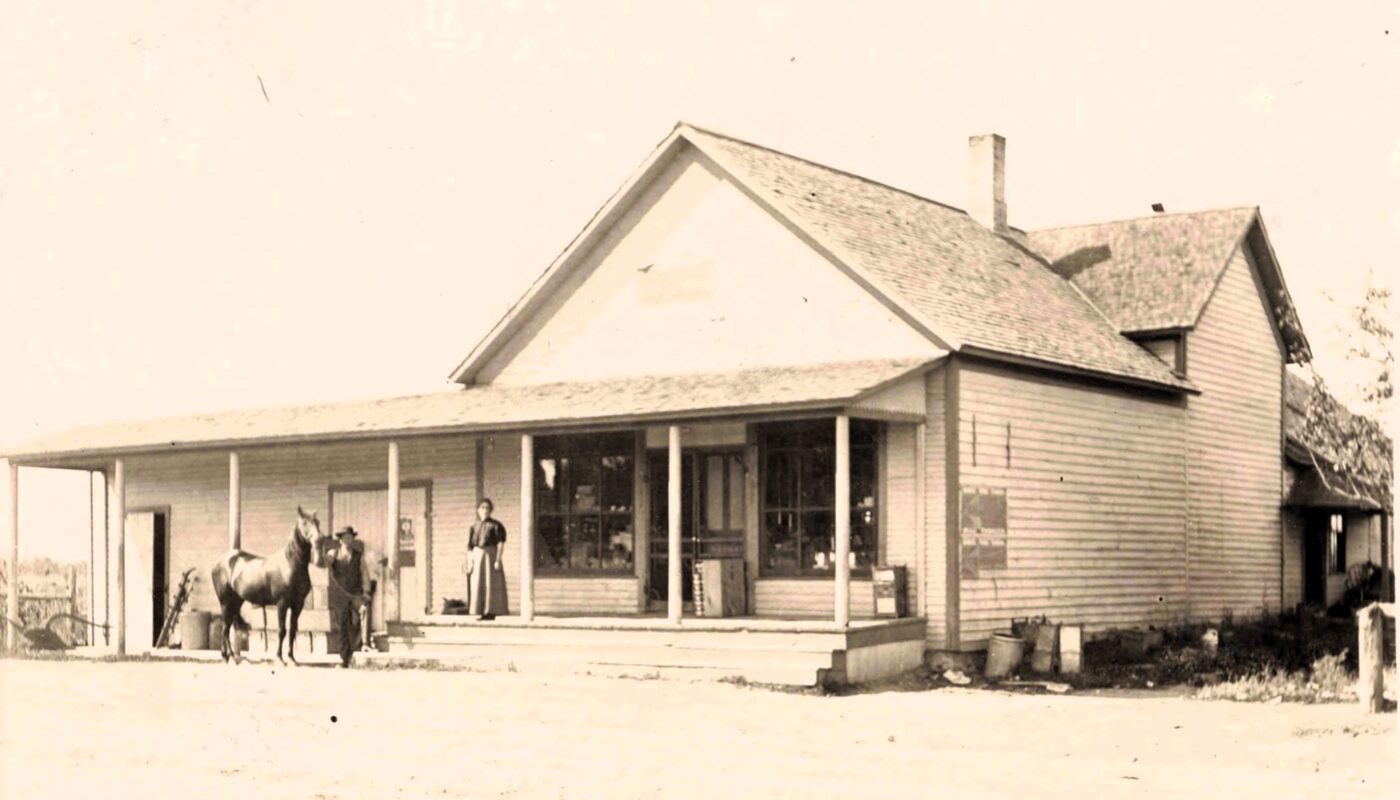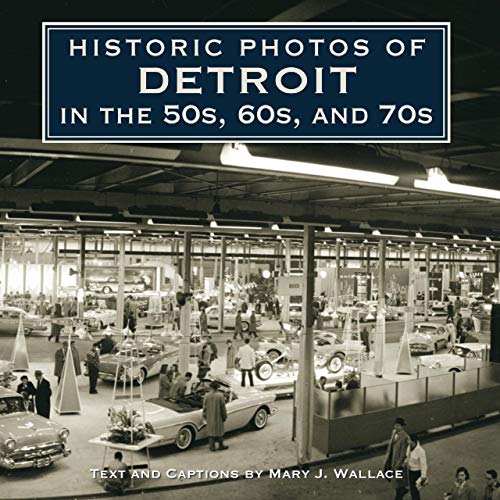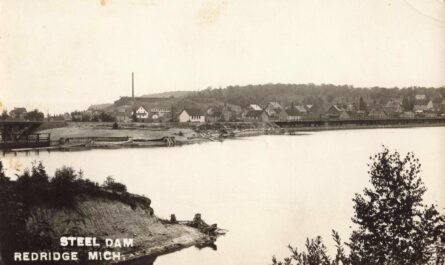At the turn of the 20th century, the crossroads village of Amble, Michigan, in northern Montcalm County, was alive with promise. Farmers came by wagon to trade at Hansen’s General Store, children filled the new schoolhouse, and Sunday bells rang from the 1st Methodist Episcopal Church. Today, little remains of Amble beyond a handful of houses and a faint name on old plat maps. But these three surviving photographs — a store, a school, and a church — reveal Amble Michigan history and the structure of small-town life that once thrived here.
Video – Hansen’s General Store at Amble
Hansen’s General Store stood at the heart of Amble, Michigan, serving farmers and travelers alike. This early 1900s image captures small-town life before cars and highways reshaped Montcalm County.
Hansen’s General Store: The Crossroads of Daily Life
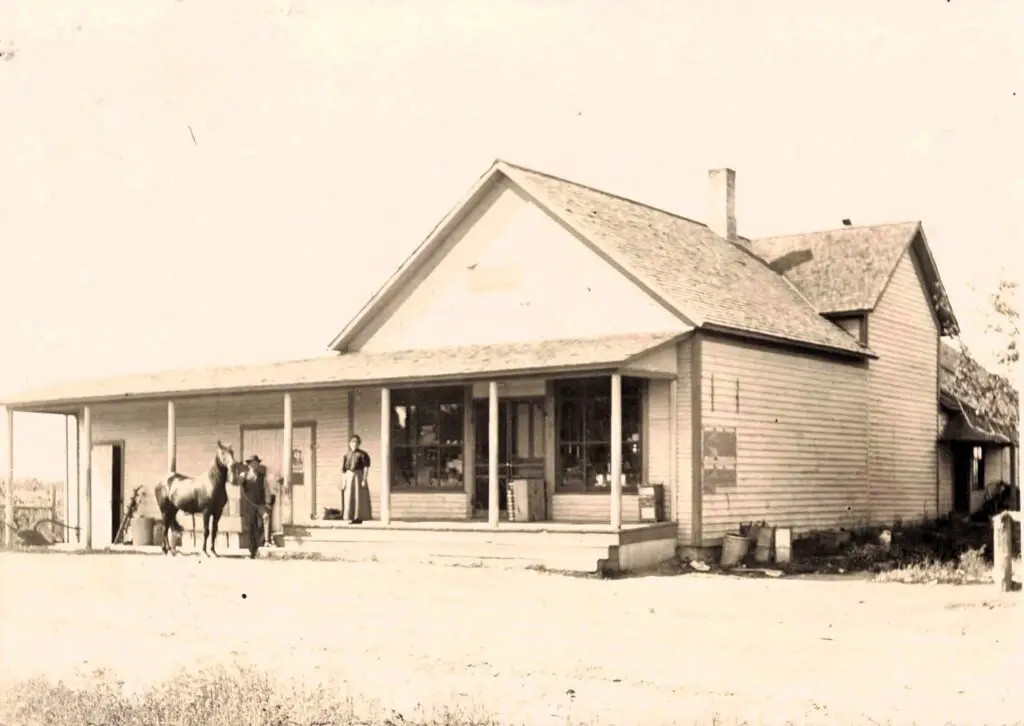
The first image shows Hansen’s General Store, likely photographed around 1905. Its wide porch, tall gable, and open façade mark it as the town’s center of exchange. Inside, shelves held everything from barrel goods and nails to fabric and coffee beans. For many in Winfield Township, Hansen’s was more than a store — it was the community’s bulletin board and gathering place.
Amble’s general stores were lifelines for local farmers who raised wheat, corn, and dairy cattle on the rolling ground south of Howard City. The storekeeper often doubled as postmaster and informal banker, keeping the rhythm of town life steady until automobiles began to redirect commerce toward larger towns.
Images on this page may contain affiliate links in which we may receive a commission. See our affiliate disclosure for details.
Historic Photos of Detroit in the 50s, 60s, and 70s
Historic Photos of Detroit in the 50s, 60s, and 70s documents what a Metro Detroiter would have experienced through those decades, from the commonplace—to a visit from John F. Kennedy.
The 1st M.E. Church: Faith and Fellowship
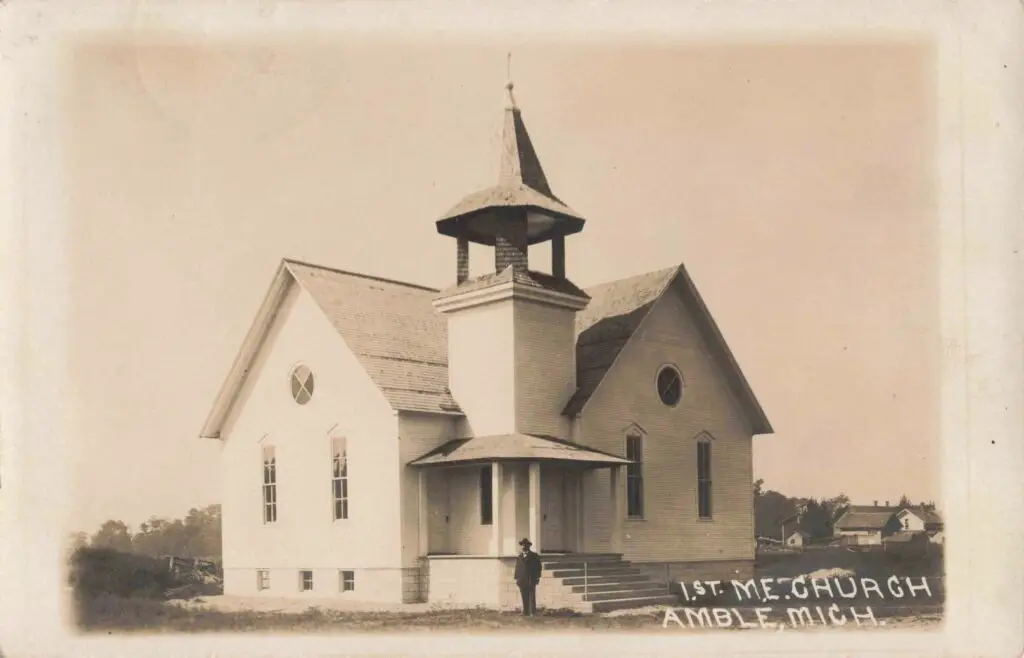
In another photograph of Amble Michigan history, the First Methodist Episcopal Church stands proud against a clear sky. Built in the early 1900s, the structure reflects a style common to rural congregations of the era: clean lines, wood siding, and a bell tower that called the faithful across open fields. A single man stands before the steps — perhaps the pastor or a congregant — giving a human scale to the architecture.
This church served as both a house of worship and a gathering hall. It hosted Sunday services, weddings, harvest socials, and holiday pageants. Its presence signaled stability and shared values in a township that, like many in Michigan, was stitched together by faith and farm labor.
Amble Schoolhouse, 1908: The Promise of Education
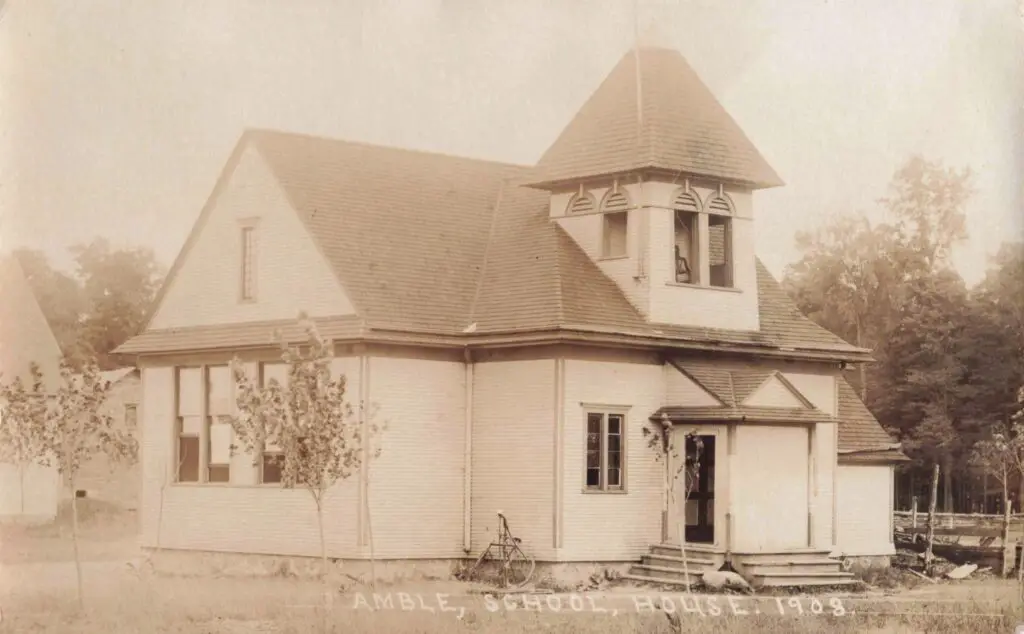
The third photo, labeled “Amble School House 1908,” captures a handsome wooden school with a belfry and decorative trim. A bicycle rests against the wall — a quiet detail of rural youth at the dawn of the 20th century. Inside, one or two rooms would have served every grade, with lessons written on slate and the smell of wood smoke from the stove in winter.
Schools like this one were symbols of optimism. They trained the sons and daughters of farmers, sawmill workers, and shopkeepers to read, write, and dream beyond the fencelines of Montcalm County. The building’s modest grandeur — a tower, symmetrical windows, and even a small porch — spoke of civic pride in a community determined to educate its children.
Rise and Decline of a Michigan Village
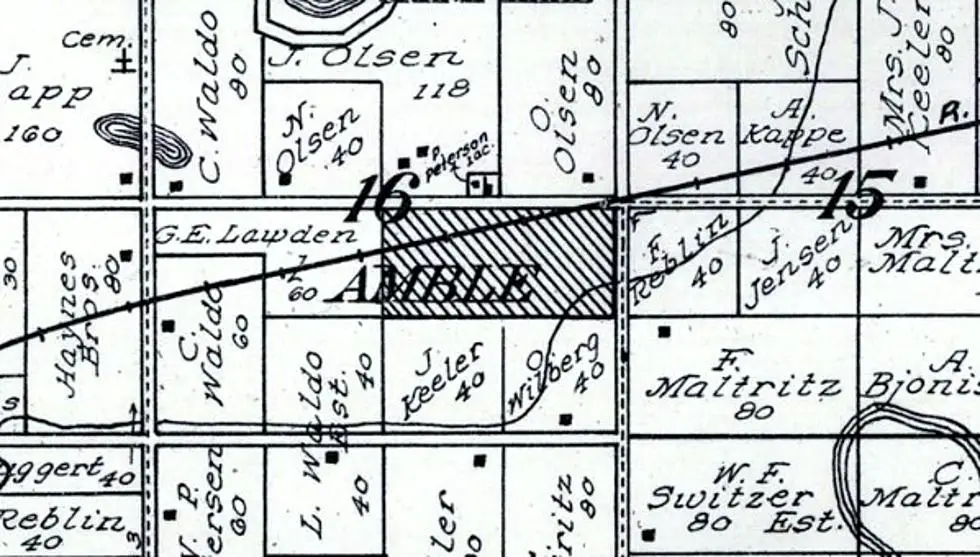
Amble’s beginnings trace to July 8, 1886, when it was platted along a new rail line of the Detroit, Grand Rapids & Western Railroad, later absorbed by the Pere Marquette. The name honored Rev. Ole Amble, a Danish Lutheran minister who served early settlers. With the opening of its post office in 1887, the town soon hosted a sawmill, creamery, blacksmith, and several stores. By 1907, roughly one hundred people called Amble home.
But prosperity was short-lived. As paved roads and automobiles connected the countryside to larger markets, small railroad towns like Amble faded. The rail service slowed, the creamery closed, and by December 31, 1953, the post office was discontinued. Hansen’s store reportedly stayed open until the early 1960s before closing or being sold.
By the late 20th century, Amble had slipped into quiet obscurity — another Michigan town bypassed by progress.
Amble Michigan History – What Remains
Today, the name “Amble” survives mostly on county maps and in local memory. A few farmhouses and foundations mark the site where the store once stood. The church and schoolhouse may have been dismantled or converted long ago. Yet the spirit of the place — industrious, faithful, and community-minded — remains evident in these photographs.
Each image holds a piece of rural Michigan’s past: the store that sustained it, the church that grounded it, and the school that carried it forward. Together they remind us that even the smallest towns once pulsed with life and purpose.
Sources For Amble Michigan History
- Michigan Historical Center, Pere Marquette Railroad Records
- Montcalm County MIGenWeb: Winfield Township History
- The Daily News (Greenville, Mich.) archives
- 99WFMK: “The Vanished Town of Amble, Michigan”
